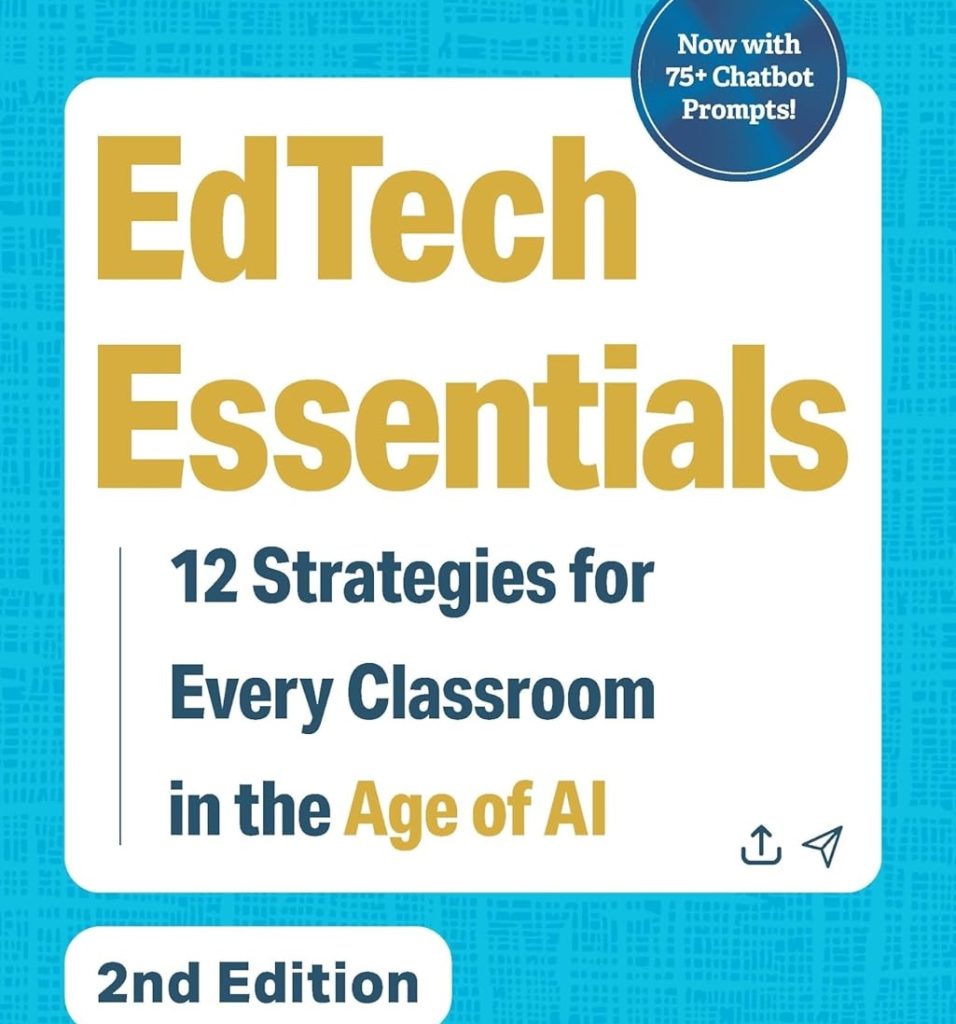
Blake Harvard teaches psychology and coaches soccer at James Clemens High School. For three years now, he’s been actively at work trying out teaching strategies derived from cognitive psychology. And, he blogs about his work at The Effortful Educator.
I spoke with Blake about his work, hoping to learn more about the classroom strategies he finds most helpful and effective. (This transcript has been edited for clarity and brevity.)
Andrew Watson
Blake, thank you for taking the time to chat with me.
I always enjoy reading your blog posts, and learning about your strategies to connect psychology research with the teaching of psychology.
Can you give an example of research you read, and then you tried it out in your classroom? Maybe you tinkered with it along the way?
Blake Harvard
Well, first: retrieval practice and spacing. Research tells us that we forget things very rapidly. Forgetting information and then retrieving that information again strengthens ties in the brain. It promotes long term memory of that information.
So, I’m very conscious of different ways that my students elaborate on information and generate information.
What am I doing to have my kids review? Or, how am I spacing out the information that we were learning yesterday versus what we were learning a week ago versus what we were learning months ago. What are the ties among those things? How are they related?
In the past, when we completed a unit of study, it was in the past. We moved on. Now I’m very careful to revisit. I space out their practice and provide the opportunity for my students to think about material we’ve covered in the past.
And second, dual coding.
I think every teacher does some activity where they have students draw something. But dual coding is more than just about drawing things. It’s about organizing the information: how does it link up?
So, using those general concepts of retrieval practice, space practice, and dual coding, and applying them to my class specifically, I’m constantly trying to get my kids to think – to think more.
Andrew Watson:
Can you give an example of a strategy you use to be sure they do?
Blake Harvard
Sure. One example is, I use an unusual template with multiple-choice questions.
In a normal multiple-choice question, you have a kid read it. They answer “B.” You think, “okay B’s correct, let’s go to the next thing.”
Well, I’ve got this template where kids have to use – have to think about – A through E.
If B’s the right answer, they have to tell me why B’s the right answer. That is, they have to think about B.
But, then, they also have to take A, C, D, and E, and think about those too.
Why is C the wrong answer?
Or, how could you make D into the right answer?
Or, what question could you ask to make E the right answer?
Even, why is A tricky?
Andrew Watson
That seems both simple and extraordinarily powerful at the same time.
Blake Harvard
I don’t want to boil all of cognitive psychology down to that, but that’s really central, I think. There’s no elaborate trick. You don’t need any new technology. At the end of the day, you’re just getting those kids’ brains thinking more with the information.
Andrew Watson
Are there some teaching strategies that you read research about, and you tried them out, and you thought: I understand why this works in psychology lab, but it actually just doesn’t work in my classroom. I’m not gonna do it anymore.
Blake Harvard
Well, I just recently did something with flexible seating. I have an AP psychology student who wanted to try this out in my classroom, I said sure.
I have first block and second block class, and they’re both AP Psychology classes, and they’re both on the same pace, doing the same stuff.
We took the first block class, and we put them in a flexible seating classroom. This classroom had beanbags, it had a couch, it had comfortable chairs, it had only one or two tables with traditional chairs.
With my second block class, we kept them in more traditional seating: sitting at tables, facing the front.
And then I taught a unit, which is about seven or eight days, to both classes. I tried to keep everything the same as much as possible, and at the end we took our unit exam and then we compared the data.
So: how did the seating affect the grades, right?
The people in the flexible seating classroom did worse than the people in the traditional seating.
And then I took the grades and compared them to people who took the same course and the same test in years past. I got the same results. The flexible seating in that one classroom was worse than all of the other classes.
I know it’s not perfect methodology. Nothing is perfect “in the wild,” so to speak. But, I gave it a go. And I’ve decided that that’s not what I want to do.
Now, my student was focused more on the emotional part of it: “how did the kids feel about it?”
She had them fill out a survey: “Do you think you did better?” “Did you feel more comfortable in class?” – those sorts of things. And I haven’t seen those surveys yet; she’s compiling information herself. I am interested to see those too.
I heard some of the comments, and it’s interesting. Some of the comments on the first day of the class that was in the flexible seating classroom were like, “Oh my gosh! This is great!” And then by the end it was, “When is this over?”
Andrew Watson:
I’m wondering if your students take the strategies you use to their other classes? Do they study history with retrieval practice? Or science? Or do you find it stays pretty local to the work you do with them?
Blake Harvard
The short answer is: I don’t know. But I definitely impress upon them that this is how you should be studying.
Rereading your notes is not the most effective way to study. Going back over your notes and highlighting them is not effective. If you’re not thinking about the information, if you’re not actually trying to do something with it, you’re probably not being as effective as you should be.
In fact, it’s not just about simplifying; the right study strategies actually save you time. If you’ve tested yourself on this concept two and three times, and you get the same things right, you’re probably pretty good. You got it. Focus on the other things that you haven’t gotten right.
It doesn’t matter if it’s math, it doesn’t matter if it’s biology, it doesn’t matter what it is. The brain works the way the brain works. If you can’t use the information, if you can’t answer this question, you don’t know it. And you need to study it, because if you did know it, you would have answered the question. It’s as simple as that.
Andrew Watson
Yes. So, we talked about whether or not students use these strategies in other classes. Are there things you encourage them to do that have research support, but they’re particularly resistant to?
Blake Harvard
That’s an interesting question. Nothing off the top of my head is coming to me…
You know: those who don’t think they’re great artists – at first, don’t want to use dual coding. Because they think “my drawing’s bad.” And I’ll say: “you know, it’s not about how good your drawing is. It’s about what it represents to you, in your mind.”
Andrew Watson
The mental practice that goes into it.
Blake Harvard
Exactly. Once you explain that to them, they’re much more receptive to it.
Andrew Watson
One of the tricky parts of our field is that there are many teaching strategies that people say have “a whole lot of research support.” And part of our job is to be good at sifting the good stuff from the not good stuff.
Do you have any advice for teachers who are trying to figure out what really is valid and valuable, not just trending on Twitter?
Blake Harvard
It’s never easy, you know.
Often, I look for multiple cases of a particular teaching strategy. Did they test 20 kids in one classroom? Or was this tested across the country?
You also want to think about the people you have in your class. If researchers test a particular demographic, but you don’t teach that demographic, perhaps their conclusion doesn’t apply to your class. Something that might work in an elementary classroom: there’s a chance it could work in my AP Psychology classroom, but I’ve got to really look at it.
To be fair, this is something I’m figuring out myself.
Andrew Watson
I know that you are a coach as well as a teacher. I wonder if you use any of these strategies in your coaching world as well as your teaching world.
Blake Harvard
Yes, I do, definitely. For me, it has to do with how I structure practice.
I want to show my soccer players what a skill should look like, what the strategy does on the field, why it works.
We want to start small. I want each player individually working on it, and perfecting it or getting better at it. Then we go into a small sided game: maybe two-versus-two or three-versus-three. And then, let’s work it into a bigger scenario.
Eventually, obviously the goal is that they use it in a real-world game.
Just like in the classroom, I’m not a huge fan of inquiry-based learning. I think that there are much more effective ways of teaching than that. I want to explain each new concept to them very clearly, in a very organized way, so that they have a good understanding of what it is. Then we try to apply it to real life. But I don’t start off there.
Andrew Watson
So, you follow the coaching version of direct instruction.
Blake Harvard
Right, yes.
Andrew Watson
Are there questions I ought to have asked you which I haven’t asked you?
Blake Harvard
It’s an interesting journey to get to where I am right now. I graduated with my Master’s Degree in 2006 and up until about 2016 I was just doing just normal professional development: whatever the school had for me to do.
Sometimes I was really excited about it; sometimes I was sitting in there barely paying attention. But now that I’ve found these different types of professional development opportunities, I see they can really improve you, and improve your students and your classroom.
You don’t have to think “I’ll just do the PD that I’m supposed to do and then I go back to my classroom.” There are ways – simple ways, easy ways – to improve your classroom, to improve learning for your students.
Andrew Watson
It’s interesting you say that, because you’ve described my journey as well. I had been a classroom teacher for decades when I found Learning and the Brain, and those conferences completely changed my professional trajectory.
Well, thank you Blake for talking with me today.
Check out the Effortful Educator blog here.






